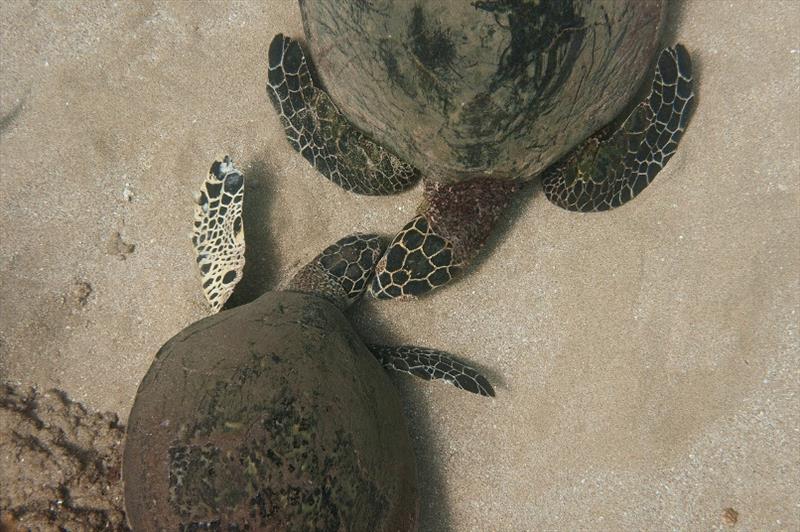
How many male sea turtles is enough?
by NOAA Fisheries 12 Oct 2018 04:30 UTC

Two Hawaiian hawksbills interacting © NOAA Fisheries / Don Mcleish
Although dozens of studies over the past 20 years have shown that it is common for a female sea turtle to mate with multiple male turtles, virtually no studies have indicated that a male turtle can mate with multiple females.
All of that changed with a recent study on a small population of endangered hawksbill turtles in El Salvador, which showed that in a single year about 30% of the males mated with at least two females. These findings have some major implications for hawksbills and sea turtles in general.
The study suggests that male hawksbills are limited in El Salvador, so several females inevitably end up mating with the same males. Several lines of evidence support this scenario, including:
- The field research team that monitors sea turtles swimming in the area has documented hundreds of female and juvenile hawksbills over the past three years, but not one adult male;
- Hybrid hatchlings (crosses between hawksbill and green turtles) hatched from several nests laid by female hawksbills at the study site. This indicates that female hawksbills are mating with male green turtles, and this is likely a result of the area's lack of male hawksbills; and
- Ongoing research into the sex ratios of juvenile and hatchling hawksbills found that approximately 85–95% of the turtles sampled were females.
The study also has important implications in the face of a changing climate with warming temperatures and the feminization of sea turtle populations. The temperature of sea turtle nests determines their sex, with warmer temperatures producing mostly females and cooler temperatures producing mostly males. Climate change is causing temperature increases at nesting beaches, already leading to many populations that have many more females than males.
The ability of male hawksbills to mate with multiple females in El Salvador may explain what appears to be a relatively healthy hawksbill nesting population at the site despite the highly skewed sex ratio. Nonetheless, whether this male mating strategy will continue as females become more and more common (and males become even rarer), remains unclear. Will there be a point where there simply aren't enough males to support a healthy population?
Future studies can use this study for comparisons at other hawksbill nesting grounds in the region. These questions have major implications for sea turtles worldwide.
Similar research on the mating systems of other endangered sea turtle populations is uncommon. However, the lack of male turtles and ability of males to mate with multiple females may be a scenario common to other small sea turtle populations. Hawksbills are particularly rare in Hawai'i, American Samoa, and other Pacific Islands. Our team is currently conducting research in these regions, which researchers of other species may find useful.
Read more: Prevalence of polygyny in a critically endangered marine turtle population (published in the Journal of Experimental Marine Biology and Ecology).